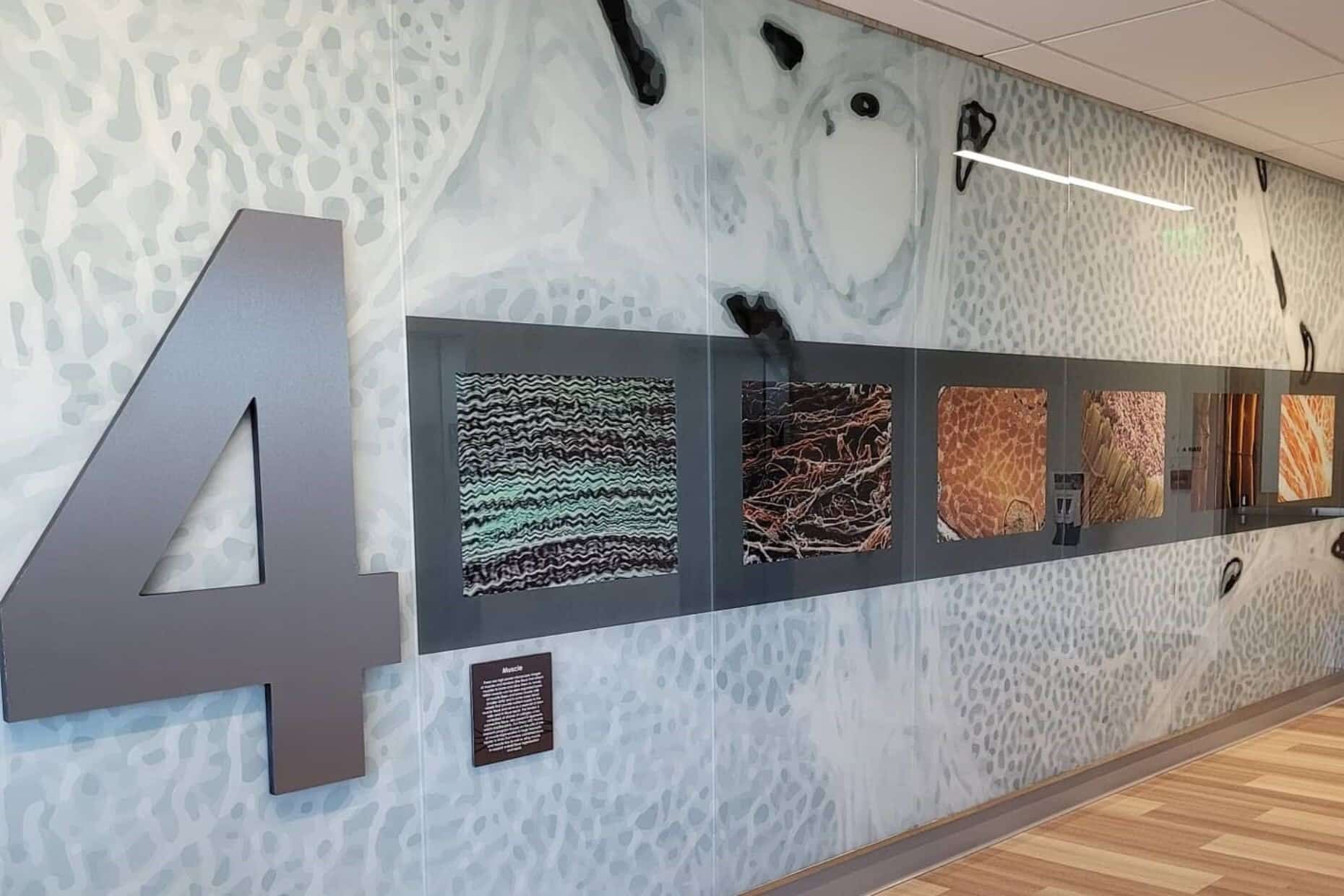December 20, 2023

Experiential design stands at the forefront of architectural innovation. Going beyond mere functionality, the method aims to craft immersive environments within defined spaces, engaging building occupants on a sensory level. Harnessing the capabilities of digital imaging on glass, designers can employ this approach to redefine how spaces are conceptualized and constructed, prioritizing emotional connections, interactive environments, and memorable experiences.
Decorative Glass in Experiential Design
Decorative glass is a potent and versatile solid surface material advantageous for architects and artists alike. It provides designers with a naturally multidimensional canvas ripe for sensory integration. Digital imaging, specifically direct-to-glass printing, enables the creation of bespoke visuals that evoke emotion and elevate user experiences through modern technologies like Alice® direct-to-glass digital ceramic printing.
This deeply customizable glass fabrication process transforms glass into multi-functional surfaces that surpass conventional design boundaries. The precision and versatility of direct-to-glass printing enable vibrant imagery, intricate patterns, and dimensional elements to be fused directly into the finished glass solution, reshaping ordinary spaces into immersive environments rich in narrative, visually appealing, easy to maintain, and highly durable.
Take the Memorial Sloan Kettering Cancer Center in West Harrison, New York. This ambulatory care center resulted from an adaptive reuse project that required converting a 1950s brick and metal building into a state-of-the-art outpatient medical facility. EwingCole employed Alice® direct-to-glass printing to support one of the multiple strategies implemented in the project to create the feel of nature inside the building. Employing immersive tactics such as biophilic design, this experiential duo creates a deeper, more meaningful, human-centered experience for patients, staff, and visitors.
Biophilic Elements in Experiential Design
Decorative glass installations serve as dynamic canvases, blending utilitarian spaces with expressive artistic elements. This integration creates emotive, purpose-driven environments built for engaging communities and infusing cultural identity. Direct-to-glass printing propels artists beyond traditional forms by facilitating the creation of expansive installations merging architectural glass with biophilic design elements. This fusion cultivates interactive, sensory-rich experiences in environments built intentionally to encourage community involvement and promote cultural exchange.
Artistic Influence on Design Objectives
Artists play a pivotal role in shaping experiential spaces. Direct-to-glass printing empowers artists to integrate decorative glass structures into private spaces, blurring the lines between traditional art and functional environments. Collaborating with project designers, artists can infuse artwork, graphics, and corporate branding into functional glass surfaces, naturally enhancing brand expression, company culture, and employee engagement within organizations.
Public art with an experiential objective often serves as a conduit for storytelling, infusing spaces with purposeful narratives and resonant emotion. By integrating artistic expressions within architectural elements like decorative glass, public art becomes a vibrant means of cultural dialogue, engaging communities and fostering a shared sense of identity through immersive, dynamic experiences. A naturally durable and hygienic surface, decorative glass offers artists a malleable canvas that requires no maintenance beyond traditional glass cleaning methods.
Reimagining Wayfinding in Experiential Design
Direct-to-glass printing revolutionizes wayfinding within experiential spaces by allowing designers to embed directional cues, symbols, or defined markers directly onto glass surfaces with limitless customization options. This innovation seamlessly integrates wayfinding elements into any glass structure, ensuring aesthetic coherence and an enriched experiential journey for building occupants.
An excellent example of this approach is the Emory Musculoskeletal Institute’s cell-themed floor markers. This state-of-the-art healthcare facility thoughtfully designed by HKS Atlanta provides the ultimate experience in healthcare, research, and education. The custom-fabricated glass wall cladding design on each facility floor incorporates ultra-high-resolution human cell-themed large-format photography with numbered markers, creating an immersive wayfinding experience for patients, staff, and visitors with each elevator door opening.
Glass architecture, particularly within experiential design, plays a pivotal role in blending functionality, purpose, emotion, and aesthetics to create immersive, operative environments. Integrating decorative glass and digital imaging technologies like GGI’s proprietary Alice® direct-to-glass printing technique signifies a marked shift in design’s experiential boundaries.
The Influence of Direct-to-Glass Printing in Experiential Design
Architects, interior designers, and artists can leverage the transformative potential of decorative glass to reshape mundane spaces and curate intentionally designed, emotionally resonant environments within their projects. With its capacity to harmonize artistry with practicality, architectural glass continues to shape the evolving landscape of experiential design, leaving a lasting impression on observers, critics, and occupants alike.
Visit GGI’s project gallery for more design insights and examples of how digital imaging on glass can create more meaningful interior spaces and building facades. Contact GGI’s design assistance team for direct inquiries.